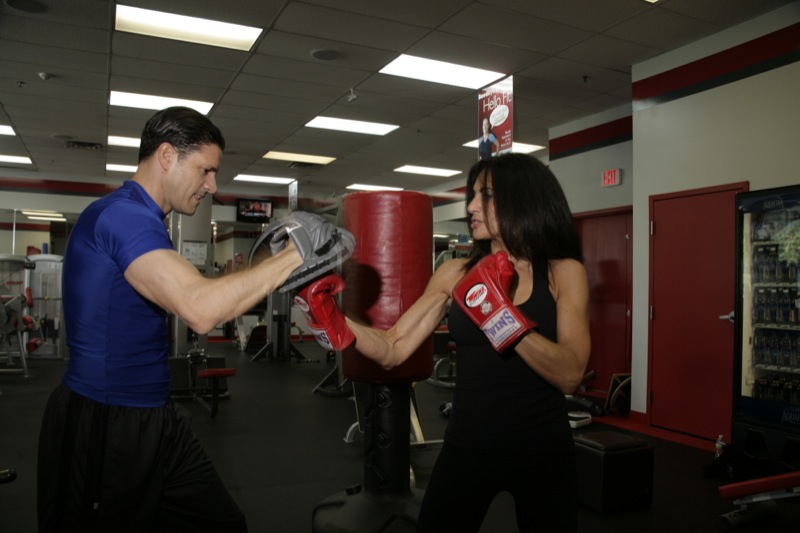Do you remember using the buddy system as a child? You can still use it today, but instead of holding your buddy’s hand during an elementary field trip, invite them to work out with you. Exercising with a friend can help you focus more on your training, and it’s especially helpful for those who lack the motivation. For example, if you plan on working out at a specific time, but aren’t really feeling up to it, the fact that your friend is waiting for you will spark that motivation. If you are ever struggling during the workout, your friend may also encourage you to push through.
Partnering up with someone can make your workout fun and enjoyable. That 3-mile run can seem like 10 miles when you intensely focus on the finish line. A little chitchat will pass the time, boost your mood and get you caught up on the latest gossip, all while getting in a great cardio workout. You may even find yourself getting a bit competitive during your run. If your partner is starting to pick up speed, you won’t want to lag behind. Challenge each other by changing up the pace once and maybe even reward the winner with a favorite meal or snack. One of you may just score a free juice or smoothie after the workout!
Other benefits of working out with someone are that they can help you correct technique issues and recommend new exercises or variations from original ones. When you are getting in shape on your own, it’s difficult to tell if there are any flaws in your technique, especially if you aren’t in front of a mirror. Having someone around to give you some guidance can help you improve your form so you can start seeing better results. Changing your workout routine can also help you see better results, as you will continually be challenging your body. Start adding new exercises to your routine. Your workout buddy may be able to introduce you to new exercises that will get you both seeing results.
5 Buddy Approved Exercises
Grab a partner and try these exercises. Be safe and be sure to have your gym staff or trainer first show you how to do the exercises properly.
1. Medicine Ball Slam: Face your partner with your feet shoulder width apart. Your partner should be standing the same way. Grab the medicine ball and reach as far back as you can, then slam the ball to the floor towards your partner. Your partner will catch the ball after one bounce, and then reach the ball over their head and slam it on the floor toward you.
2. Stability Ball Twists: Stand back to back with your partner. Hold the stability ball and extend your arms in front of you. Turn your torso to one side, as your partner turns to the opposite side so they can grab the ball. Your partner will repeat this, passing the ball back to you. Keep repeating. This is a great core workout for both you and your partner.
3. Boxing: Put on a pair of boxing gloves and have your partner wear sparring gloves. Punch at your partners hands. This cardio workout will increase your heart rate, burn calories, improve quickness and coordination.
4. Partner Standing Row: Stand facing your partner, while holding one end of a resistance band and have your partner hold the other end. Pull the handlebars in as your partner stands still. Go back and forth repeating this.
5. Chin-ups: Using a doorway pull-up/chin-up bar, get in position to do a chin-up as your partner holds your feet underneath you. This will make the exercise easier to do. To make it challenging, have your partner hold your feet in front of you. Complete a few sets and then switch with your partner and repeat.
Disclaimer: The exercises explained in this article are opinions and should not be taken as a substitute for qualified medical expertise. Any fitness activity carries an inherent level of risk. The information contained in this article is for educational purposes, if you apply the ideas contain herein you are taking full responsibility for your actions and agree not to hold Fitness Training by Eraldo for any direct, indirect, punitive, special, incidental or other consequential damages arising directly or indirectly from any use of this material, which is provided “as is.”





 I am committed to working with you to help you achieve your personal goals and maintain the discipline necessary to meet those goals in a healthy and long lasting way.
I am committed to working with you to help you achieve your personal goals and maintain the discipline necessary to meet those goals in a healthy and long lasting way.